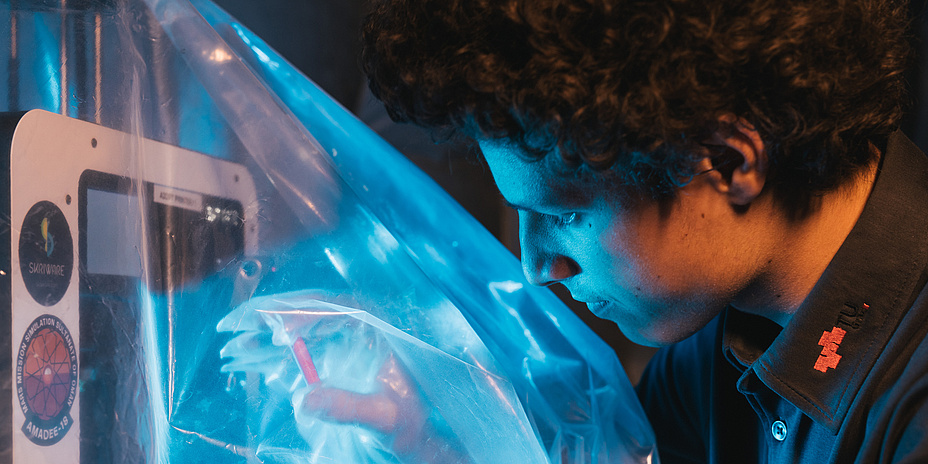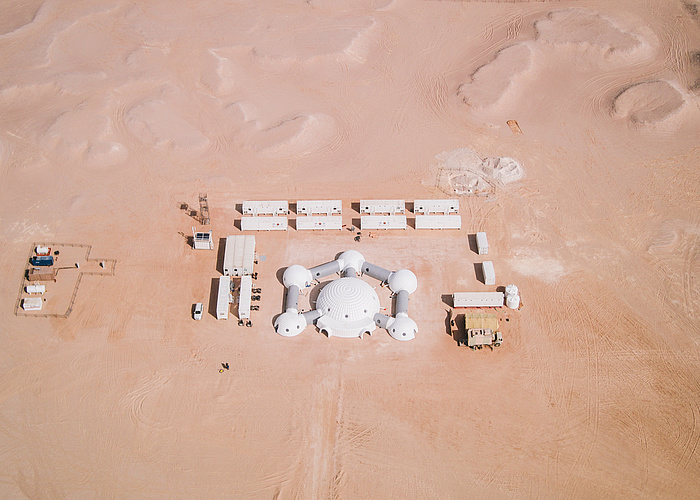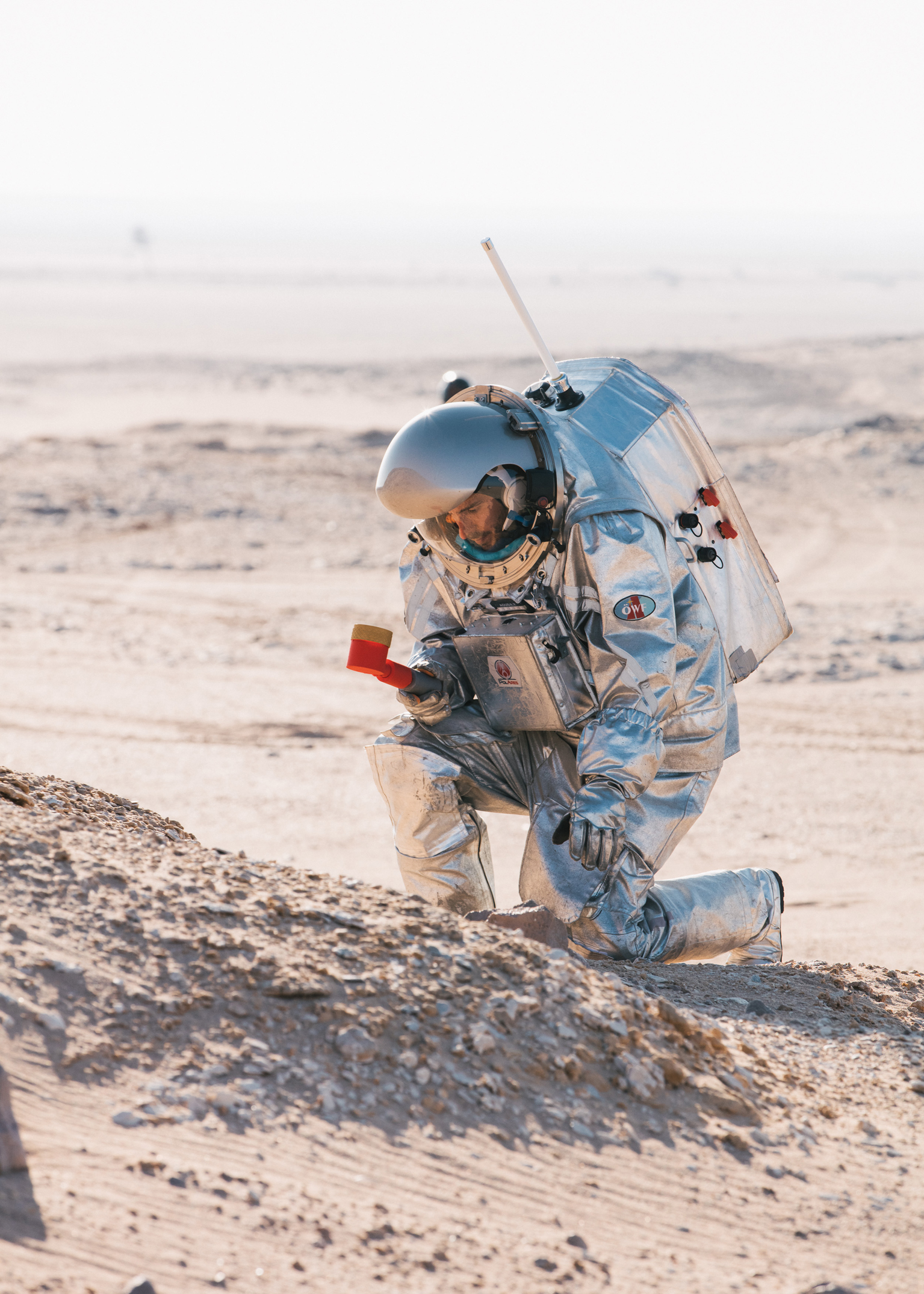… my month on Mars

First steps to Mars
Everything began two years ago at a conference about space operations where we presented a paper about the last analog mission to Mars in 2015. I got to know my current team colleagues there, who were also presenting research about the topic of analog mars missions. During these few conference days we came to the conclusion that we wanted to launch a joint project to maintain contact with each other. In the search for a topic we stumbled on several papers which declared 3D printing as a key technology for future manned missions to Mars. On the basis of this, we developed an experiment which was meant to test to what extent 3D printing influences service operations. We wanted to find out whether 3D printers actually raise the flexibility of operations, whether as experiments or maintenance work, and whether they facilitate big payload savings. Furthermore, the question interested us as to whether it is more efficient to control the printer from the Earth or from Mars itself. This question may initially seem banal, but it deals with a very complex problem, as we later discovered. To save the crew’s valuable time, you would tend to choose the tele-operations method from the Earth. However, it soon became clear that due to the average signal propagation delay of 10 minutes, presumably bigger problems would result than when the astronauts would do it themselves.
From vision to mission
Keeping these questions and problems in the back of our mind (see Fig. 2), we worked out exact procedures for reference activities which would check this experimentally. We then applied to the Austrian Space Forum for a place on board for experiments and our experiment was accepted. In the six months leading up to the Mars simulation mission, we had to elaborate the procedures even further and tailor them to the activities of the Austrian Space Forum. Additionally, we had to find another partner who would make the 3D printer available to us. We got back to the Polish company Skriware with whom we had worked together on an earlier version of the experiment and which sells desktop 3D printers to private consumers. The hardware had to be shipped from Innsbruck to Oman in two containers two months before the beginning of the mission, and until then we had to have everything organised. After we had overcome these hurdles, there was still time for us to improve a few last finer points in the procedures of the experiment. Then we went to Mars! Analog astronaut taking a geological sample using a 3D-printed tool. © Florian Voggeneder
Analog astronaut taking a geological sample using a 3D-printed tool. © Florian VoggenederLanding on the red planet
We flew to the desert region of Dhofar and from there we continued our journey by bus. As we approached the region of the destination on bumpy sand roads and the habitat with its impressive white domes became visible in the distance (see Fig. 3), it became obvious why the Austrian Space Forum had chosen this spot of land. With its reddish sandstone mounds and the distant sandy plains interrupted by black pieces of rock, the region really did look like the landscape photographed by the NASA Rover on the red planet itself. But then we were there to work and not simply to wonder at the landscape. And this is what we did for the next four weeks. There was a huge number of geological formations which were investigated using a variety of experiments, including an old wadi (a dried-out river bed), and this was where our experiment was carried out. The tools produced by our printer for taking geological samples were deployed many times (see Fig. 1 and Fig. 4). Also in other situations it was a great help to have the 3D printer. For instance we were able to print a variety of replacement parts and add-ons which considerably simplified the work of our analog astronauts. We also had technical problems with our devices several times and we learned a lot of lessons. Although we were in the position to resolve these incidents, it showed us once again how important it is to have a full set of replacement parts with us. The month in the desert went very quickly and we were all agreed it was as if time was playing tricks on us.
Successful impression
The mission was a big success, but now followed the main work – analysing the data. In our case this meant going through the log files and reports to find out the times which we need for the various scenarios and how good our 3D-printed components performed. The results will be prepared in the coming weeks and summarised in a paper which we would like to present in an Austrian Science Forum science workshop in May in Graz; see more information on: www.oewf.org) and at the SpaceOPS 2018 conference in France.The Graz University of Technology is already strongly represented with three of 19 experiments in the Mars simulation. The team around Gerald Steinbauer from the <link http: www.ist.tugraz.at _blank int-link-external external link in new>Institute of Software Technology of Graz University of Technology contributes the experiment "Husky Autonomous Rover". The experiment involving the team of Martin Hagmüller from the TU Graz <link http: www.ist.tugraz.at _blank int-link-external external link in new>Institute for Signal Processing and Speech Communication deals with radio communication. Michael Müller, a student of physics at Graz University of Technology and a member of the OeWF as well as a trainee, is investigating the possibilities of 3D printing.
Kontakt
NAWI Graz Student <link https: www.tugraz.at int-link-external internal link in current>Physics at the Graz University of Technology
<link int-link-mail window for sending>m.mueller@student.tugraz.at



